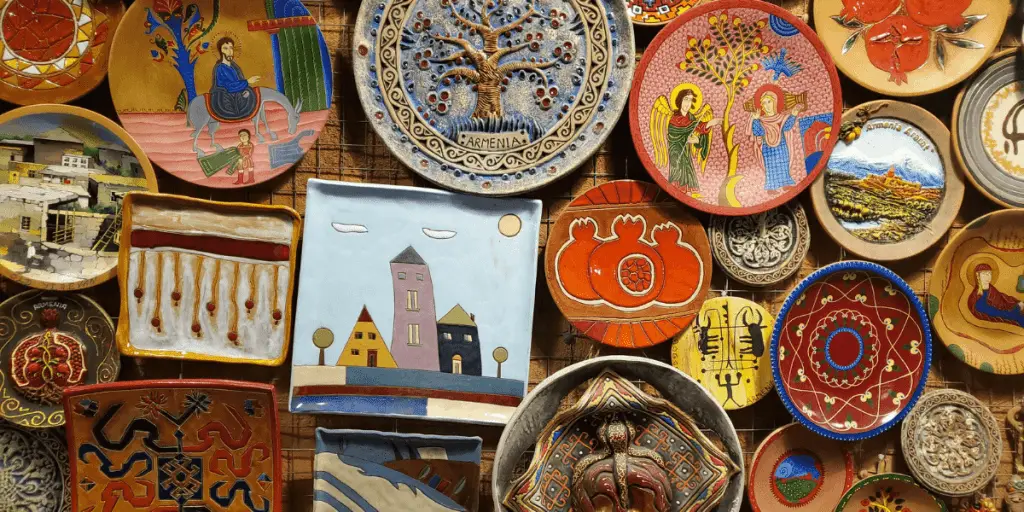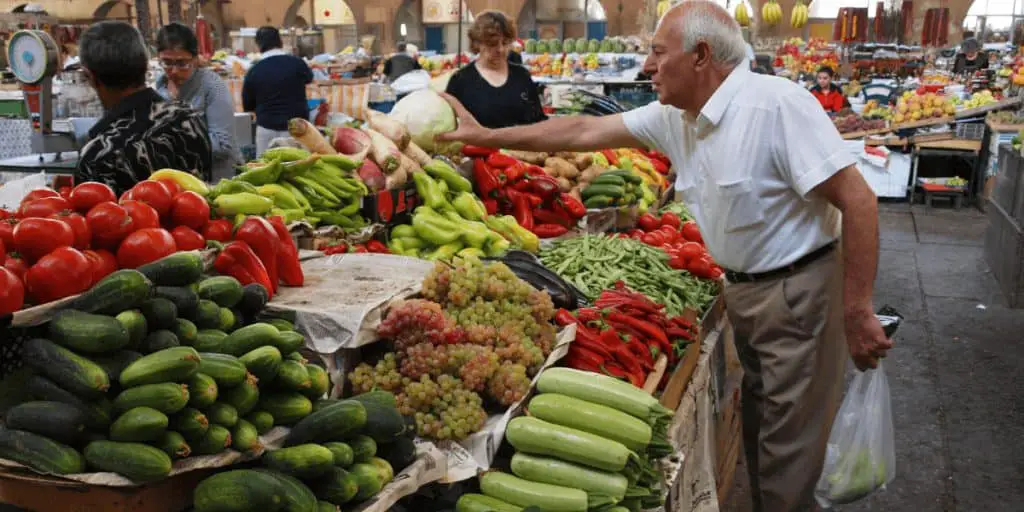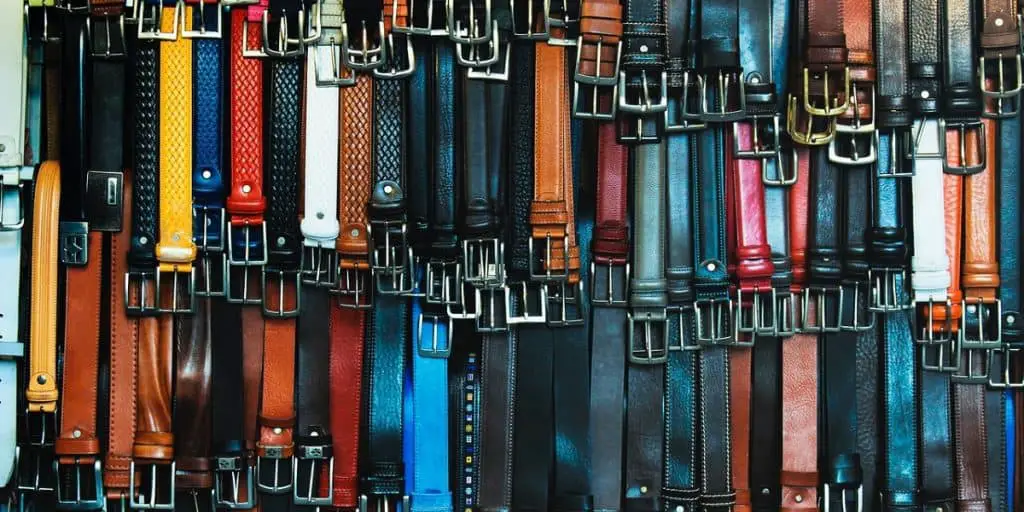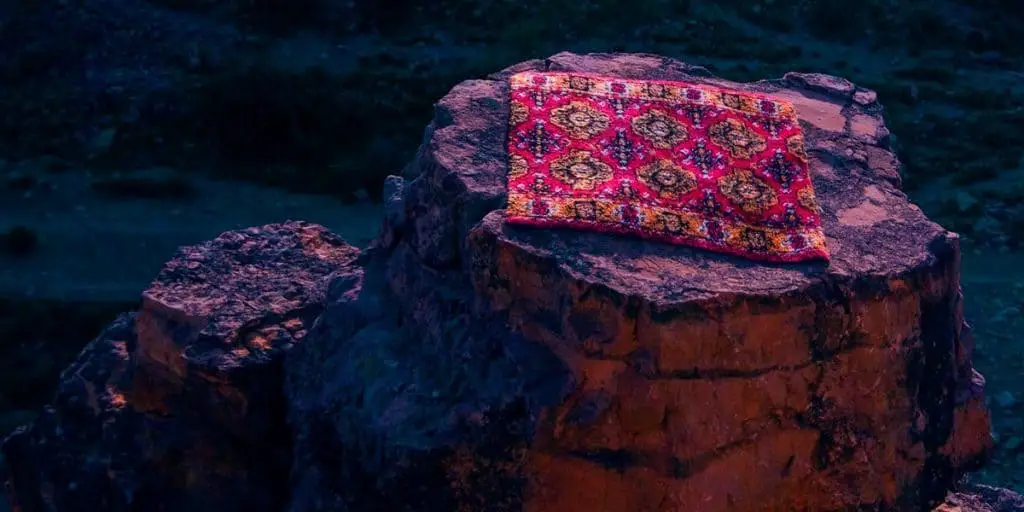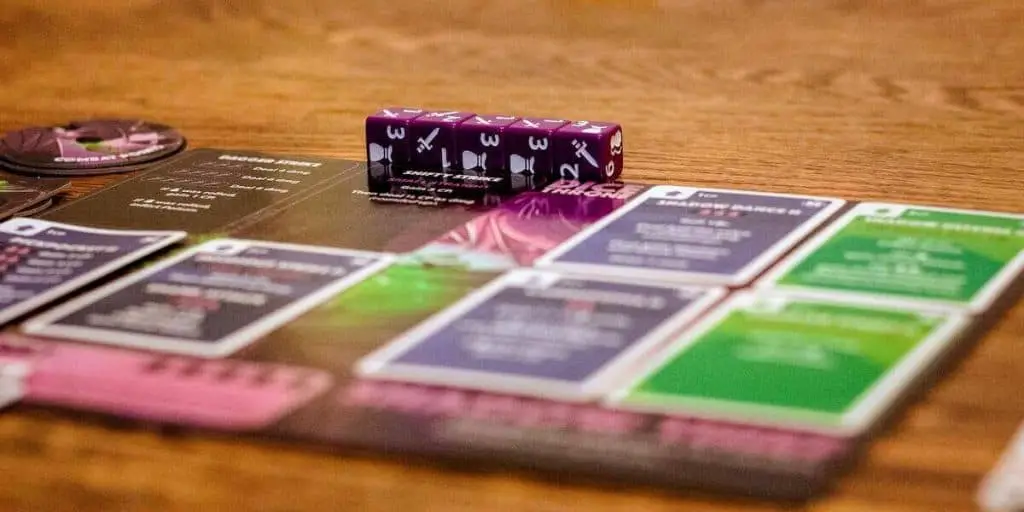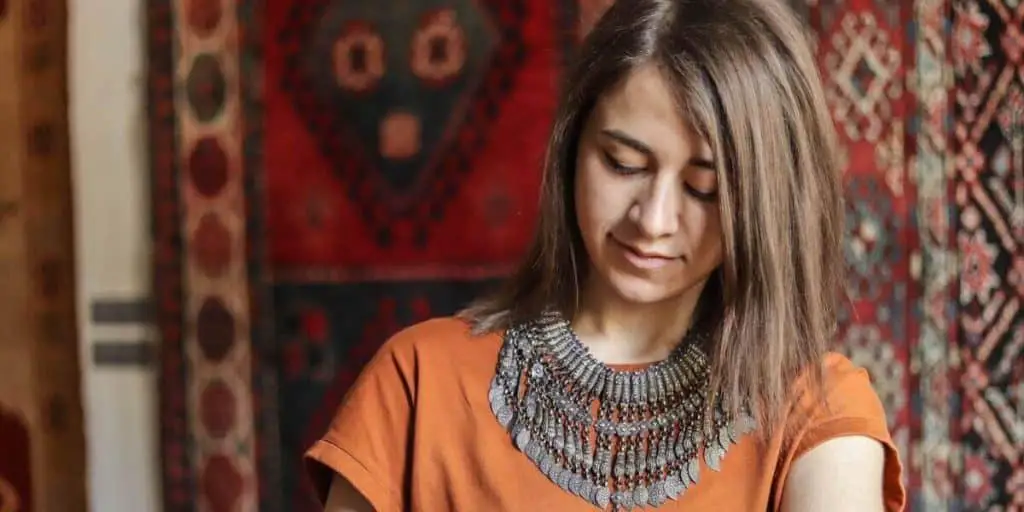Shopping is a mandatory part of every trip. Apart from being an enjoyable time-spending experience, it is also a great way to get to the culture and communicate and bargain with the locals. And of course, before even landing, you just have to read about some interesting and famous things to buy in Armenia. So, this post is some kind of a must-buy items list for you. If you eventually buy anything from the list and are really happy about the purchase, let me know on Instagram or Twitter, with #ArmeniaTravelTips.
Dried fruits, fruitnut strings and rollups
Dried fruits are a brand image of Armenia. You see, this country has a great climate to grow fruits. But mind, the fruit grown here tastes nothing similar to those grown in special artificial conditions, in greenhouses in a developed country. Here, fruits naturally soak up the sunrays. And believe me, you can really taste it while eating it, especially when fresh.
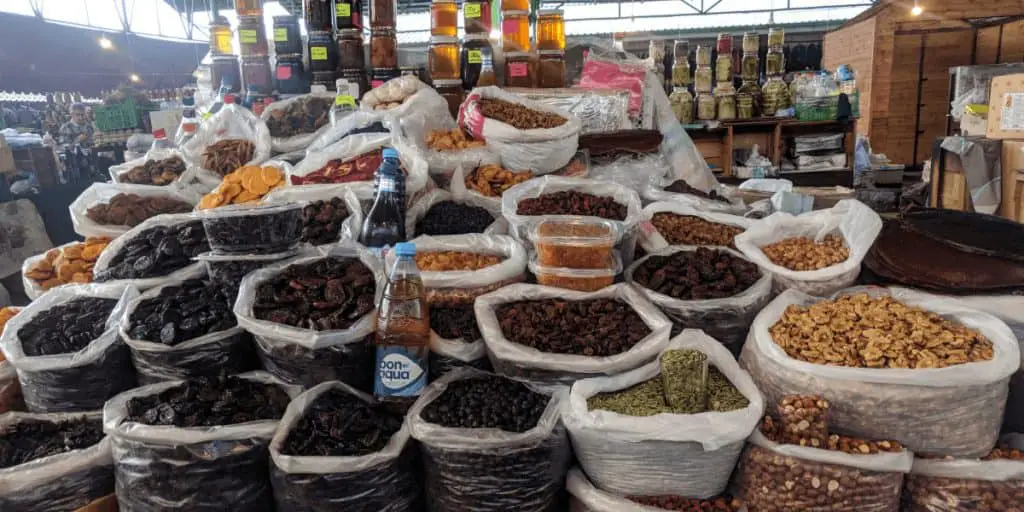
Where to find these?
The packaged versions of these sweets are almost always available in supermarkets. But my advice would be not to buy such things from stores, but go for markets. There are several reasons for this:
- First, packaged items are overpriced.
- Second, these are produced by registered companies which have a comparatively larger-scale production. This means that the probability is high that they use special drying methods, additives and preservatives. So you won’t get the real taste of fruits.
- And third, you will miss out on the real cultural communication experience! That’s a no-no!
So here’s what: you really need to visit markets and experience their vibe. They’re a-ma-zing! And if you don’t know yet where exactly to go to, here’s a post especially written for those looking for market options nearby: Shopping in Yerevan markets.
Fruits dried in the sun
A legit way of preserving these sweet and delicious fruits is drying them in the sun. Most people in Armenia don’t use dehydrators and sulfur, so in 80% of cases (even without asking) all you get is a natural product without additives.
Found at any open market or store these beautiful vivid fruits will catch your eye even from far away. From apricots to plums and pears, you will see a really wide range of dried fruits to any taste.
What to look for? Here are some tips:
To find the best dried fruits, you can look, smell and even taste the products. Don’t be afraid to ask for tasting them. Armenians will gladly offer a handful of different fruits for you to try.
1. Darker color
Look for a slightly darker shade than the natural color of the fruit. This might sound counter-intuitive, but it’s a hint that no special preservatives were added to keep the original color. And in natural conditions the fruit gets a slightly darker color when dried.
2. Dry touch
Naturally fruits dry out and become very tough and rough. These are harder to bite, but genuinely you need to wash away the dust and soak them a little bit, so no worries here.
Most people avoid overdried fruits and want to get softer ones. And that’s why many sellers soak their overdried fruits in sugar syrup (sugar+lemon juice+water). This way fruits become softer and sweeter. So mind this if you don’t want to have fruits with added sugar.
3. Mild sweetness
This one relates to the one above. But when tasting, try to catch the various taste notes of the fruit. Sometimes mild sweetness is the best option when it comes to specific sorts of fruits. So don’t get crazy trying to find the sweetest natural dried fruits.
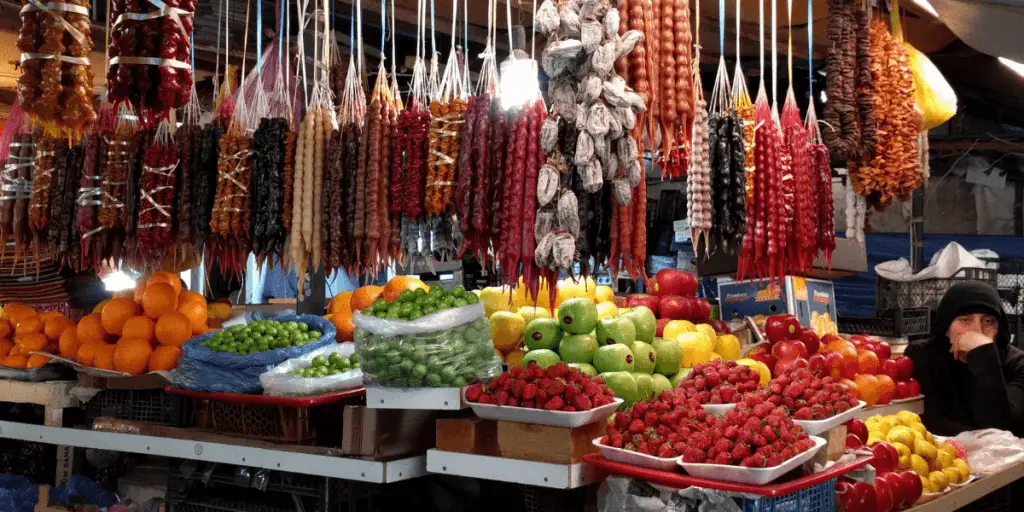
Fruitnut Strings
This is yet another form of preserving fruits combining them with various nuts and drying on special strings. These are also very famous in Georgia. The fruit portion is most often cooked with grapes and sugar.
Tip! You won’t be able to wash these like dried fruits, so try to find ones which have been preserved in a plastic wrap. These will not have the common dust like the ones hanging for display.
Fruit Rollups
Rollups are quite famous in many countries of the world. These are basically the fruit puree dried on long plastic bags and rolled. Most of the time these rollups have no sugar added, so you can easily find and taste even the most sour plum rollups.
Tip! Here, too, look for wrapped options, if available.
Armenian Cognac a.k.a. Brandy
Yes, Armenian wines are considered good. But Armenian brandy is legendary. Have you ever heard that Armenian brandy was Winston Churchill’s favorite drink? Well, you just learnt that. Armenians are pretty proud of that.
And do you know what it has to do with Cognac? Technically, brandy is the type of an alcoholic drink and Cognac is a variety of it, which is made in the Cognac commune in France. It’s said to be the top-level brandy also because it’s made from special grape varieties that grow there.

So in Armenia too, we grow grapes and we produce brandy. And the brandy produced here is so exceptionally good that it was lucky enough to deserve to be called Armenian cognac. It’s made with a traditional method, with Armenian grapes and spring water, aged between 3 to 10 Years.
And yes, Armenian cognac is a must-try and a must-buy. Even if you’re not a brandy lover, this isn’t something to miss out on. You can visit the legendary Ararat Brandy Company in Yerevan, take a tour and take part in tasting (follow the link to read more). And the good news is, there are very small bottled versions that you can get as gifts or souvenirs to your loved ones. You can also check out my post on the cost of alcohol in Armenia and find a comparison of supermarket and bar prices of cognac to have an idea.
Armenian Chocolate
Recently, Armenia has had a very successful rise in chocolate production. Companies like Arcolad, Gourmet Dourmet, Yerevan Chocolate Company and Grand Candy have fantastic collections of locally flavored chocolates with nuts, dried fruits and other country-specific solutions. You can buy them at any supermarket. All of them are affordable and will make a great gift.
Souvenirs
Here’s when things get a little messed up and a lot more interesting.
Armenia has several very prominent and typical symbols like apricots, Ararat mountain, and pomegranates. All of these are turned into souvenirs as much and as unexpectedly as possible. For example, pomegranates can be in the form of anything from pendants to wooden decors, jewelry boxes, salt shakers, and old Armenian carpets. (By the way, before you decide to buy one, check my blog post on Armenian carpet history). Apricots will appear on T-shirts, jewelry and pottery. Well, and Ararat…. Ararat is everywhere. Literally everywhere.
Above all this, there are so many other interesting souvenirs that you can take home, dolls in traditional costumes, clay wine jugs, coasters and more. Yes, so many that it’s not possible even to mention. And it doesn’t even make sense. You need to see them and touch and like and feel attachment.
So what you need to do not to get lost in all of this symbolism and traditional vibe is just take some time and decide where you want to go. I’ve earlier written about the Best places to buy souvenirs in Yerevan. Check that out and organize your plans accordingly.
And if you find that not enough for your huge souvenir appetite, here’s another one to fill the gap: 6 Best souvenir shops in Yerevan. Now you have all of it. And make sure to go take some rest before shopping for souvenirs.
In conclusion…
Let’s agree on one thing: all these small and interesting experiences always make up the best part of memories about a trip. And shopping can become one of them. Armenia is a cheap country, so even if you decide to buy everything listed in this handy guide, that won’t break the bank. Definitely, go for it. You’ll be able to share something beautiful with others. Don’t forget to share your best shopping moments with me on Instagram or Twitter, with #ArmeniaTravelTips.
Featured image credits: @find_something_pretty_everyday on Unplash
